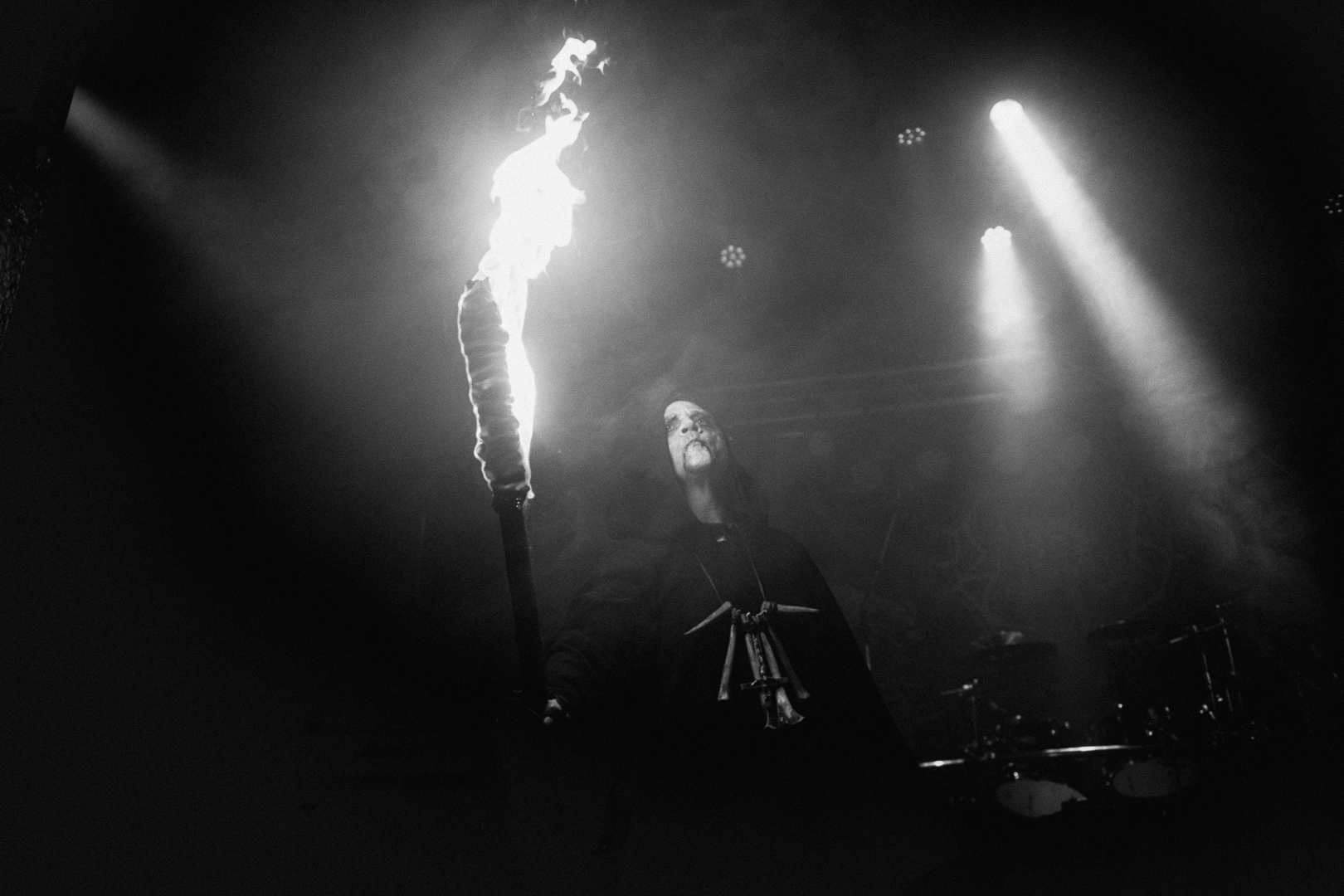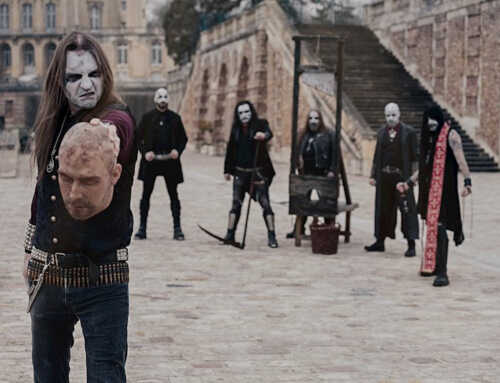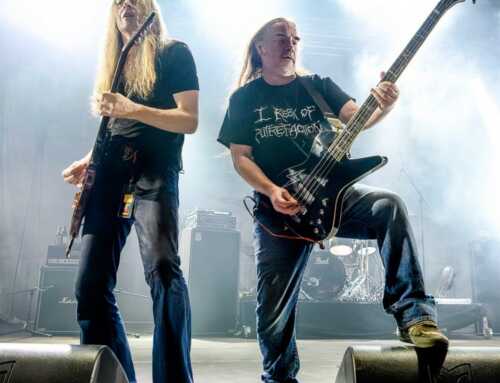Scott Adams here at Sentinel Daily made the terrible mistake of asking me to do a monthly column, so now you’re in for it. I’ll get into the bashing and slamming soon enough, but for now let’s start things off with a fun little list, because everyone loves those!
DON’T CALL IT A COMEBACK: THE MOST WORTHWHILE BAND REFORMATIONS
With metal and the nostalgia surrounding it being virtually permanent at this point, there is a ton of hype and money to be had by staging a comeback. The older your band, the bigger a deal it will likely be, but then there’s the question of making a respectable return. Band reformations can propel a vaunted act into a new era of productivity and prosperity, or serve as an embarrassing final nail in the coffin. With that in mind, here are some notable bands who managed to do it right.
ASPHYX – As one of the cornerstone bands of the Dutch death metal movement, Asphyx’s early nineties releases featuring vocalist Martin Van Drunen are the most celebrated and best-remembered. After his departure, the band struggled with their identity and core personnel until calling it a day in 2000. In 2007, the band returned with a revamped lineup, featuring Van Drunen, founding drummer Bob Bagchus, previous Asphyx alumnus and Pentacle frontman Wannes Gubbels, and Thanatos guitarist Paul Baayens. There was quite a buzz about their return to the stage, and it was quickly obvious that this version of the band could deliver the goods. This resulted in 2009’s Death… The Brutal Way, which showcased a perfect balance of musicality and brutality, along with a polished continuation of their classic-era sound. It’s not every day that you can buy an album from 1992 and then buy a follow-up recorded seventeen years later and not sense any notable gap, but that’s exactly what Asphyx did.
CELTIC FROST – It’s a challenge to discuss the history of this trailblazing Swiss act without the word “fraught” coming up multiple times. Celtic Frost came roaring out of the gates with two mighty EPs, a staggering full-length, a challenging follow-up, and then a major stumble that made the band seem irretrievable. After a failed overhaul in 1990, the band disbanded and only reappeared in fits and starts with demo recordings. Then, in 2006, founding members Tom G Warrior and Martin Ain returned with the massive Monotheist, which finally captured the scope of the band’s desire to match heavy riffs with avant-garde concepts and orchestration. While old-era fans weren’t always sold on the new approach, the consensus was that it was quite exciting to have the band pounding out their immortal classics on the tour circuit after such a long absence. Sadly, the band once again disbanded two short years later, and this time for good. For their trouble, Monotheist proved to be the epitaph that Celtic Frost needed, and Tom G was inspired to continue the direction of Monotheist with Triptykon, who are still performing great music (along with live versions of Celtic Frost classics) on a stage near you.
Heaven and Hell – The second attempt at reforming the Dio-era Black Sabbath line up proved to be quite a winner, with a fantastic live album and then a follow-up studio release that worked better than it even needed to. Dio proved again why he was one of the best vocalists in the history of metal, and the band proved how much they still had to offer in the third act of their lives. This was painfully underlined by Dio’s passing in 2010, which was all the sadder because there was apparently more on the way. Even so, The Devil You Know was a very respectable way to say goodbye.
DEMOLITION HAMMER – Sometimes there’s a “Van Gogh” effect when a band that was unappreciated at the time comes back more relevant in hindsight. Demolition Hammer is a perfect example. I saw them open on several tours in the early nineties, and while they were fine, their approach didn’t stand up to the death metal insanity from the likes of Deicide and Morbid Angel. Fast forward to 2016, and they’re back and much deadlier than the first time around. How did that happen? If getting meaner with age is the answer, then I can’t wait to be sixty like frontman Steve Reynolds is now. It’s unclear if Demolition Hammer is planning a new album, but your priority is seeing them live while you can. They will blow your fucking head off!
BAXAXAXA – After releasing a sole demo in 1992, it didn’t seem like this German black metal cabal would ever have a reason to return, but twenty seven years later they did exactly that with a new demo, an EP, some very convincing live shows, and then a proper full-length. 2021’s Catacomb Cult was easily one of the best black metal releases of the year, with its authentic atmosphere and traditionally clandestine sound. The best part about this effort is that it wasn’t remotely based on hype or cash-grabs, but rather because they still had something to say. In a sea of imitators and retreads, Baxaxaxa is the genuine article.
DEMILICH – This band’s story is truly intriguing. They were one of the anchor bands in the early nineties Finnish death metal movement, with four demos out in two years. Their first LP, Nespithe, was issued in 1993, and was widely regarded by the larger underground community as inaccessibly strange. The vocals were weird, the riffs were fractured and technical, and death metal was already starting to cool off, so Demilich proved to be a hard sell and quickly broke up. Over a decade later, and with notable help from the infamous website Dark Legions Archive, Demilich reformed in 2005 and debuted in America at the Maryland Deathfest, along with a string of underattended (but now legendary) dates across the US. They dissolved again shortly after, and made one final ballyhooed appearance at a 2010 festival in Finland. The reverence surrounding Nespithe had compounded in the interim, and Demilich decided to return to the fray in 2014 with a rabid new fan base behind them. Since then, Demilich has played all over the globe to great acclaim, despite still only having the one album and a subsequent compilation featuring only two new songs. Not bad for a group of Finns who weren’t even that worried about it. The word is that they are stopping once again as of this writing, but we’ll see how long that lasts.
DEMIGOD – The alpha to Demilich’s omega, Demigod was another significant leader in Finnish death metal, punctuated by their debut full-length, 1992’s Slumber of Sullen Eyes. Mastermind Esa Linden subsequently departed, and a revised lineup offered two more releases, neither of which were comparable to the first LP. The band officially called it quits in 2008. As death metal revivalism gained traction circa 2010, the classic lineup returned with Linden at the helm, and they went on to play four festival appearances before stopping altogether in 2013. Their debut has just seen a handsome re-edition on Svart Records, and while their time back may seem like a blip on the radar, their performances were some of the most memorable of that decade. Sorry if you missed it!
SATAN – As one of the original NWoBHM bands, Satan made their mark with 1983’s Court in the Act, and then subsequently rebranded under the monicker of Blind Fury. They were effectively missing in action until 2011, when they returned as Satan with the classic Court… lineup and began touring and recording up to the present. In that time, they have reclaimed their position as heavy metal pioneers and continue to regularly turn in good albums and electrifying live performances, while remaining true to the the sound that defined them. Many bands of this vintage might show evidence of dinosaur syndrome, but Satan has the chops and conviction that will make you feel like you stepped into a time machine. For that alone they deserve your attention.















Leave A Comment